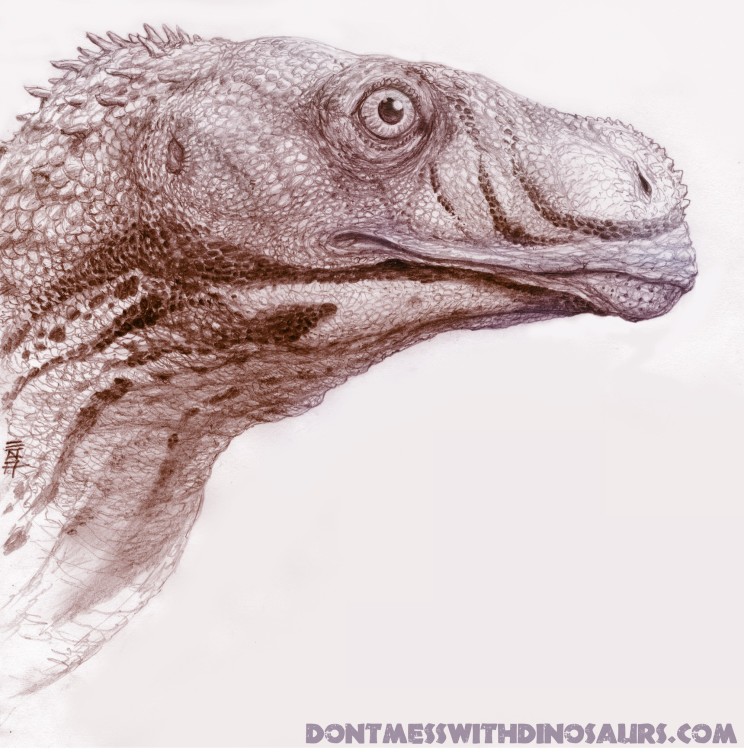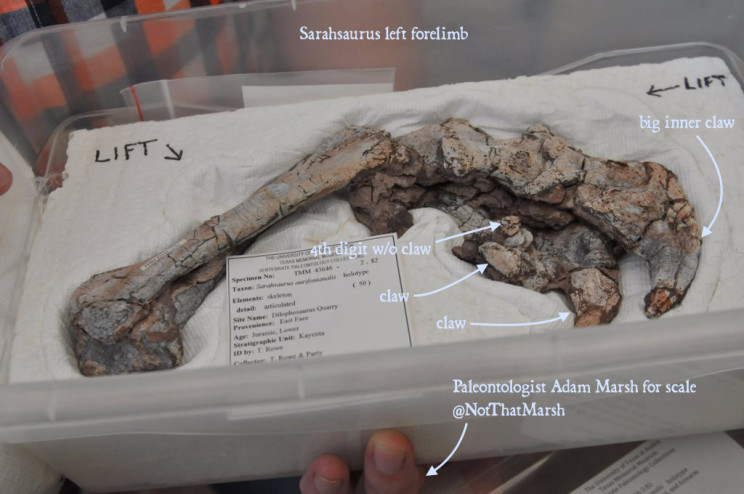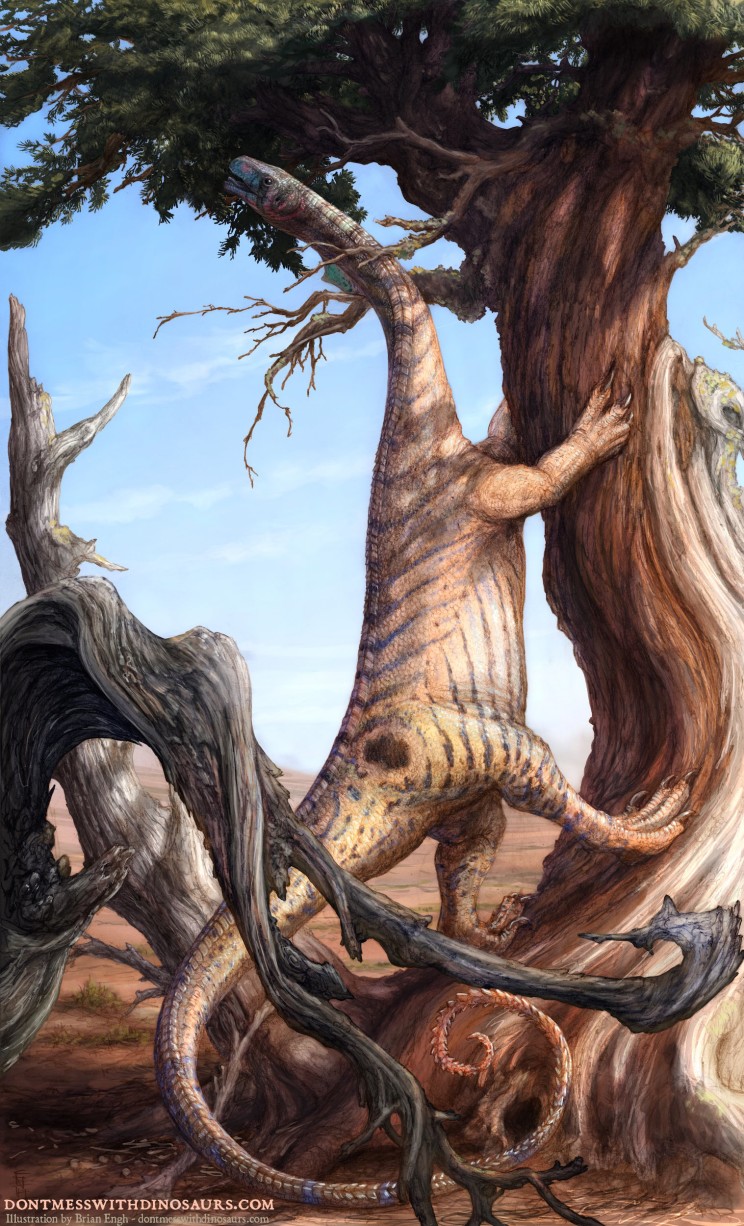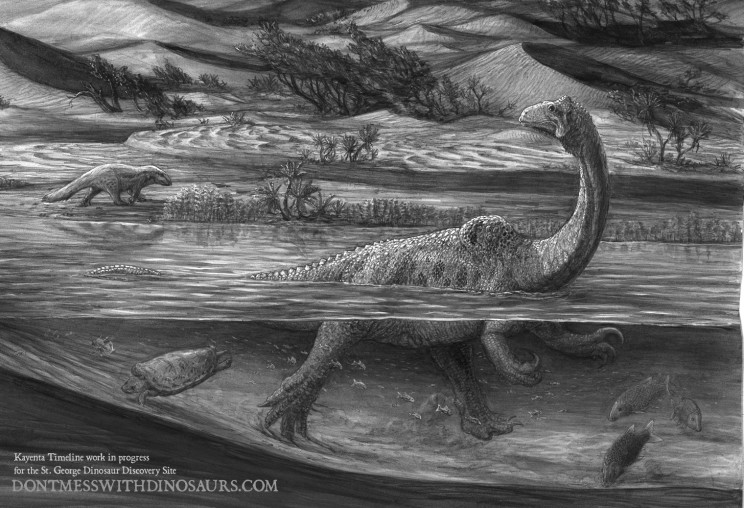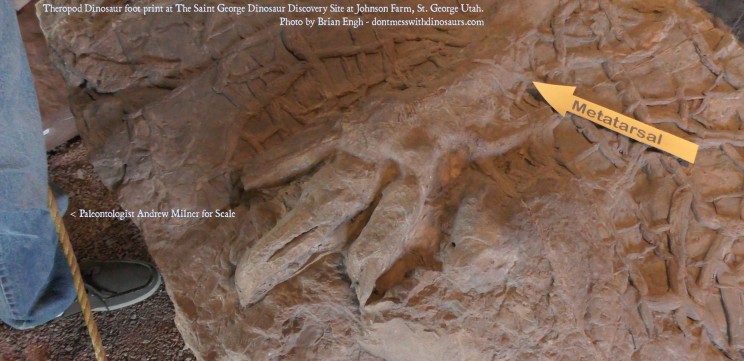Some call her Sarahsaurus, I call her Odd Slothdragon
As if all the excitement of Dynamoterror being announced yesterday wasn’t enough, a project that has been active in the background for a long time was finally published today – Dr. Adam Marsh‘s redescription of the early Jurassic basal sauropodomorph (aka “prosauropod”) Sarahsaurus. I did two illustrations which are featured in the paper and which were commissioned by the St. George Dinosaur Discovery Site Museum for eventual use in exhibits there. Here’s my reconstruction of this dragon’s weird little head:
You can find a link to Adam’s paper here:
Anatomy and systematics of the sauropodomorph Sarahsaurus aurifontanalis from the Early Jurassic Kayenta Formation
Sarahsaurus is fascinating and significant because it is one of the earliest known examples of a basal sauropodomorph in North America, which means it’s arrival is the beginning of a long story of adaptation and diversification by sauropodomorphs in North America that would later give rise to famous super giants like Brontosaurus, Diplodocus and Brachiosaurus. But despite the fact that Sarahsaurus had a long neck, it was otherwise really crazy different from the more derived giant long necked Sauropods that we find abundant fossils of in the Late Jurassic. Check out this skeleton.
If you look through Adam’s paper you’ll see, uhm, A GODDAMN TON of beautiful images of Sarahsaurus’ gorgeously preserved, mostly complete, articulated skeleton. One of the most compelling features is a powerful, fully articulated hand with strong claws. It’s death pose appears to be the result of strong tendons in the animal’s hand contracting as rigor mortise set in, pulling the clawed fingers inward to a contracted position.
This articulated dino paw appears to have had the ability to grasp things, somewhat like that of a modern sloth or bear. That inspired this illustration of the animal rearing up against and more or less grasping a conifer in order to reach the foliage.
But despite these apparent adaptations for feeding in a bipedal mode, the large trackways which match these prosauropods and which appear in the fossil record in North America at around this time show diverse locomotory capabilities. These animals sometimes walked upright, sometimes would drop to all fours and walk quadrupedally, and at the Red Hills Parkway site in St. George Utah, Paleontologists Andrew R. Milner and Tracy Thomson have found and are in the process of describing a series of large four toed scratch tracks, deposited in a muddy river bottom along with numerous other scratch tracks, all of which point to various animals swimming, their buoyant air-filled bodies floating at the surface with the clawed toes of their paddling feet just barely slicing through the dense sediments at the bottom. The only animals in the Kayenta formation that would have made big four-toed tracks like that would have been prosauropods like Sarahsaurus.
Swimming prosauropods are, for some reason, maybe my favourite thing ever. These strange sloth like dragons, paddling along the flooded rivers of the early Jurassic, adaptable and durable, able to not only survive in tough environments but thrive in them well enough to give rise to the largest land animals that ever walked the planet, and all while looking like total weirdos.
This image, based on the amazing swim tracks from the Red Hills Parkway site is just a tiny excerpt of my much larger Kayenta Timeline illustration, a work in progress for the Saint George Dinosaur Discovery Site Museum. When completed these illustrations will be part of an exhibit on the Kayenta Formation which will feature fossils from each of the localities at different stratigraphic (rock layer) intervals represented in the timeline. And Sarahsaurus certainly wasn’t the only charismatic dinosaur living at this time… Another, much more famous dinosaur which Adam has been working on a re-description of is also featured in the timeline, and also depicted in a way you’ve never seen before…
If you’re in southern Utah, or passing through on your way to or from Salt Lake, Vegas or Los Angeles, definitely stop in St. George and check out the museum – it’s only about 5 minutes from Interstate 15, the same exit as In-N-Out Burger, and It’s built over another early Jurassic track site in the Moenave Formation, which is just a bit older than the rocks Sarahsaurus was found in.
The floor of the museum is covered with dinosaur tracks, showing a variety of behaviors including swim tracks, which were deposited there around 200 million years ago when theropod dinosaurs paddled out into an ancient lake to prey on fish. It’s one of those rare places where you can stop for a few minutes to grab a bite to eat and find yourself looking at fossils left by dinosaurs who were also stopping to grab a bite to eat two hundred million years ago.
If you’d like to support my work and see more behind the scenes material on the process of creating the Kayenta Timeline and my other projects, consider supporting me on Patreon.
